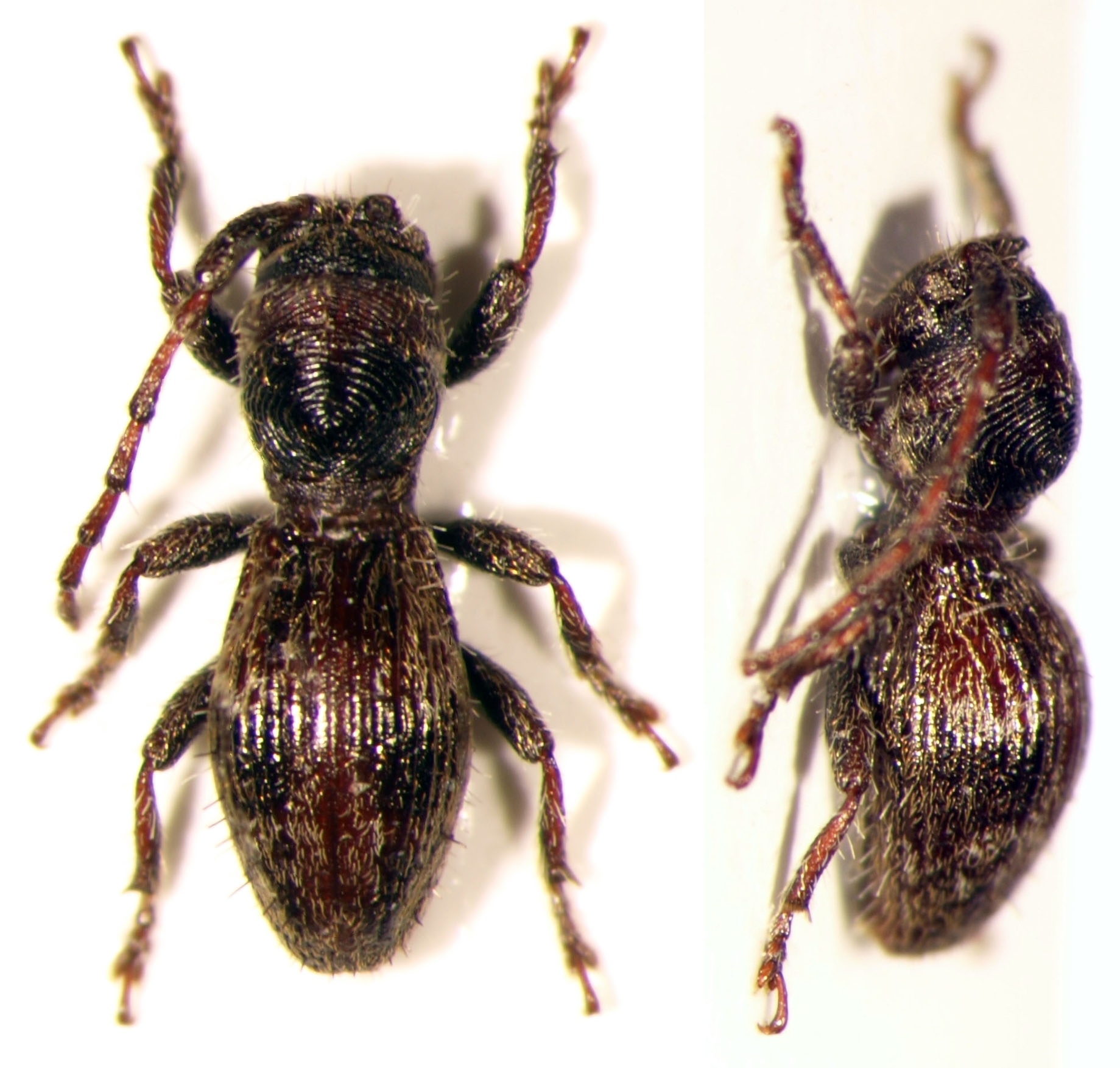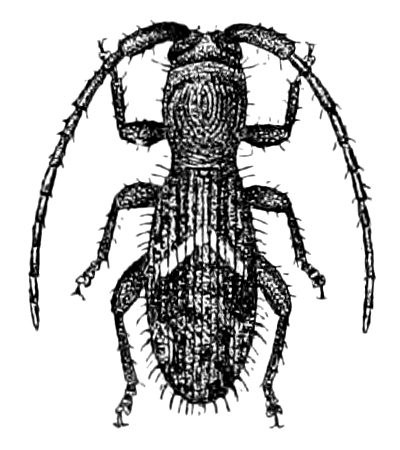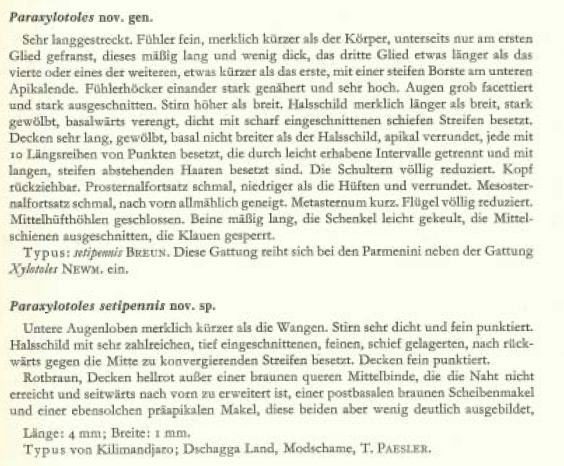| T O P I C R E V I E W |
| Vitali |
Posted - 12/01/2013 : 13:22:23

495.1 KB
This is one of the fanciest Cerambycidae I’ve ever possessed, with such concentric groves in pronotum and longitudinal ones in elytra.  Looks like mimicking weevils from genus Barypeithes or similar. Looks like mimicking weevils from genus Barypeithes or similar.
Uganda. Length 3.7 mm.
I dare to suggest unconfidently Pamenini. Except Parmena, which is not obviously the case, there are only 5 other species from Tanzania and South Africa (Lamiaires du Monde):
Ovaloparmena capensis Breuning & Teocchi,1983
Paraxylotoles setipennis Breuning,1973
Spinosomatidia obesa Hunt & Breuning,1955
Stenauxa exigua Aurivillius,1925
Stenauxa fasciata Breuning & Teocchi,1983
Does anyone have the corresponding descriptions to compare? |
| 6 L A T E S T R E P L I E S (Newest First) |
| Vitali |
Posted - 18/01/2013 : 14:14:46
Great! Thank you.
The genus is surely correct.
I am a bit confused because of that light oblique band in elytra. I cannot see any trace of it in my beetle. There are 4 Assinia species in Kenia, Uganda and Tanzania. |
| Francesco |
Posted - 18/01/2013 : 12:44:01
Bienvenu dans le Forum Jean-Philippe!

... et merci!
J'ai trouvé le dessin de cette espèce (ici) et ça ressemble beaucoup.

Phymatogyrus inermis Aurivillius, 1908
Donc il s'agirait d'un Apomecynini aptère.
Selon Kolbe ce genre appartenait aux Parmenini et selon Aurivillius aux Spalacopsini (= Agapanthiini)... ça ne me semble pas une situation claire...
|
| jplami |
Posted - 18/01/2013 : 12:11:45
Ce petit lamiaire me semble être Assinia inermis Aurivillius, 1908. |
| Francesco |
Posted - 17/01/2013 : 09:18:13
There are several differences: - the elytra are defined "sehr lang", maybe Breuning would have defined them as "lang"... in fact, Xylotes has longer elytra
- I do not know whether there are 10 "Langstreifen"... they seems to me more numerous
- All Streifen should have erect hairs, but it seems to me that only the lateral Streifen have them
- There is no mention of the recumbent yellow pubescence
- the pronotum has a completely different sculpture (converging to the middle), as you correctly noticed
I am even not sure if it belongs to the same genus... 
The correct binomen is Ovaloparmena affinis (Breuning, 1981)
|
| Vitali |
Posted - 17/01/2013 : 08:38:23
It seems that the deduction method works... or better to say the exclusion method.
I am placing the original description of Paraxylotoles setipennis below. Breuning’s German is a bit difficult to me. For example, instead of concentric groves in pronotum there is “die Mitte zu konvergierenden Streifen besetzt”. Is this the same? Could you please verify the description of both genus and species? Can we regard the beetle identified?

179.78 KB |
| Francesco |
Posted - 12/01/2013 : 17:46:03
I have to check all descriptions; however:
- Stenauxa can be excluded since it has divided eyes
- Somatidia is a wide Australian genus with spined prothorax, The name obesa should not correspond to this species
.
According to me, it might be Paraxylotoles setipennis, since Xylotodes has prothorax mutic and transversely ridged above. Moreover, spinipenns means "with spined elytra".
Though there are only speculations, I will look at this directions. |


